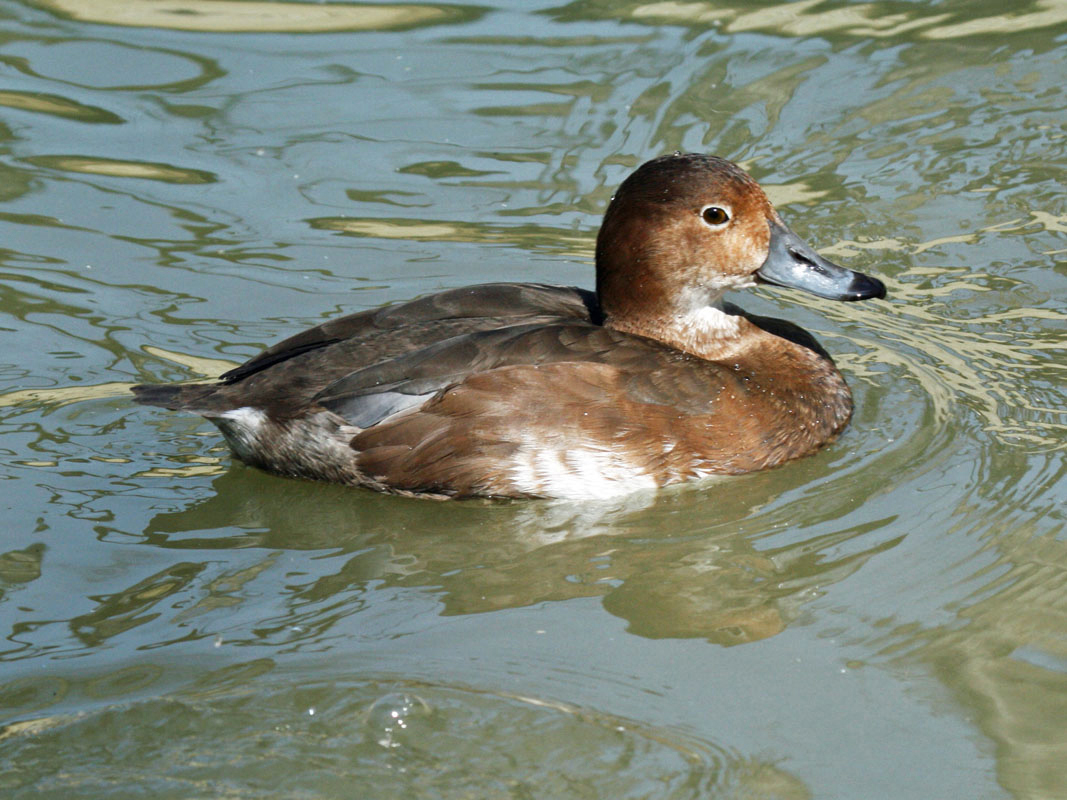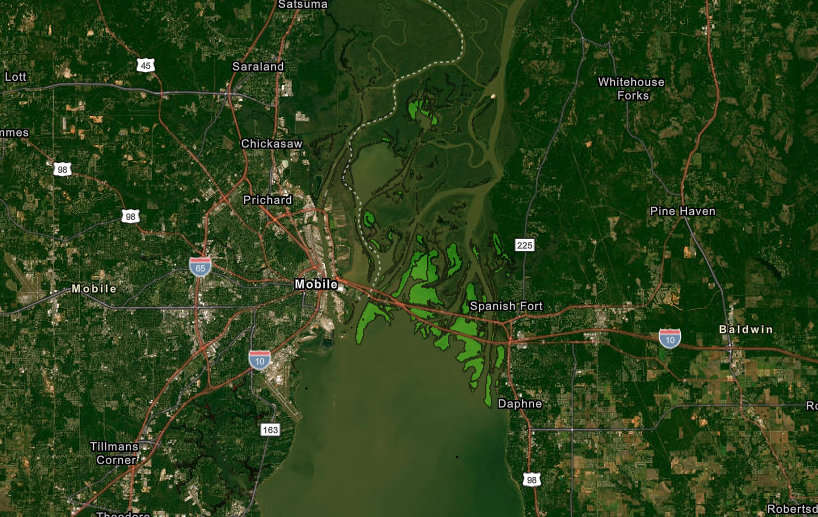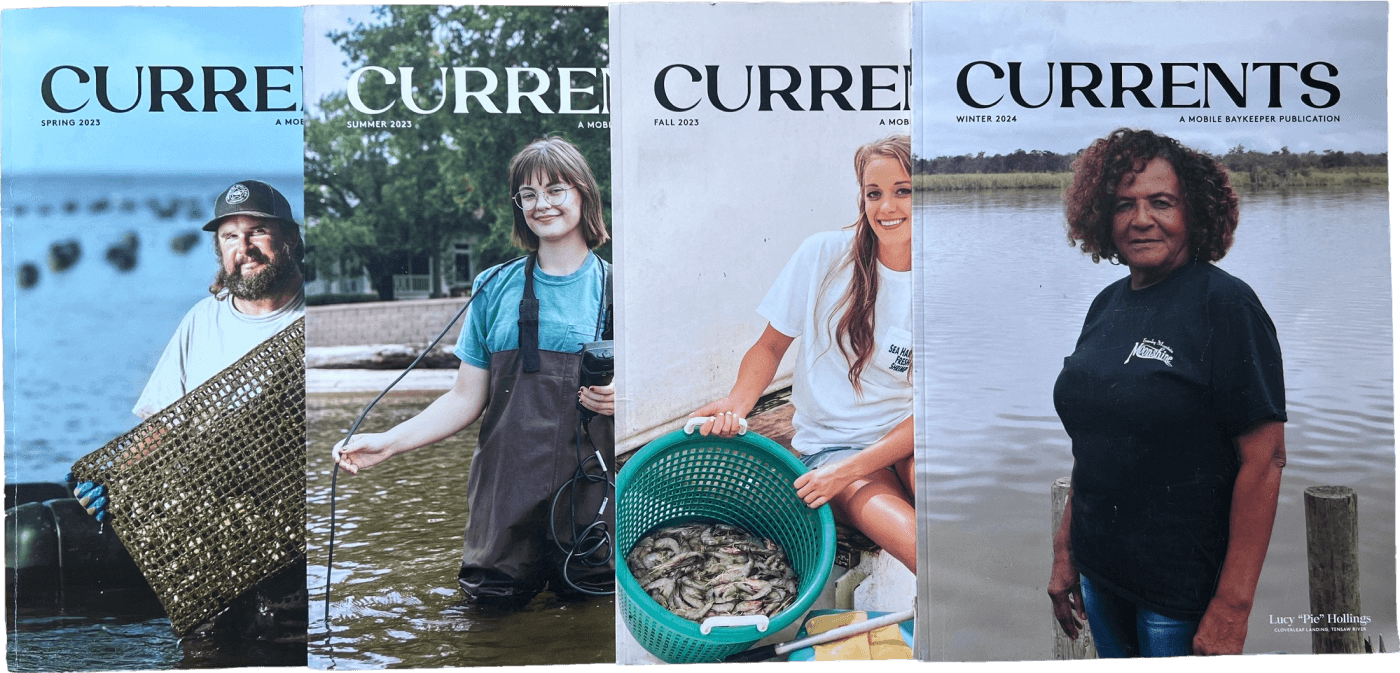
This article is from the summer 2024 edition of Mobile Baykeeper’s print quarterly, CURRENTS. The magazine is mailed to active members who have given more than $50 in the past year. To get on the magazine’s mailing list, donate here.
By Nick Williams
I’m not a big indie rock fan, but Modest Mouse’s Isaac Brock wrote one of my favorite song lines of all time.
“Someday you will die somehow, and something’s gonna steal your carbon,” he sings in “Parting of the Sensory.” This phrase has become my own personal memento mori. It’s a thought that slips into my head often, especially when I’m eating. While I think that some diets are definitely better than others at reducing the suffering caused by the necessity of eating, at the end of the day, someone has to die, somehow, for you and I to eat.
Protein, fat, and carbs are all technically composed of hydrogen, carbon, oxygen, and nitrogen at the atomic level, but tanks full of those elements do not support human life. As we all learned in grade school, we are part of a food chain. Unable to synthesize the necessary proteins, fats, and carbohydrates that support our bodies from minerals, air, and sunlight (like plants do), we instead eat them after they’ve done the necessary chemistry to construct those molecules. Or, we eat the things that eat those plants. The plants, in turn, will eventually get the last laugh, as everything that eats them eventually turns back into the dust from which it was made, and from which plants grow.
Nobody’s carbon is safe.
Many of us are somewhat disconnected from the idea of a food chain. As a hunter, angler, gatherer, and very occasional gardener, I’m well aware of it. Not just because I have to shoulder the burden of killing and butchering my meat, but because I have to find it first.
To be successful at hunting and fishing, you have to be keenly aware of food chains and the overarching food web of an area. Bass, crappie, and catfish anglers in the Mobile-Tensaw Delta know that their target species follow schools of shad, and that shad are found in areas with high plankton levels. Hunters know that where there are acorns, there are deer, turkeys, wood ducks, and hogs. Inshore anglers know that everything in the Bay will eat a shrimp (or anything that looks like a shrimp) under a popping cork.
Most of us pay more attention and feel more strongly about organisms like deer, ducks, redfish, and bass than we do about the “autotrophic” (from the Latin for “self-feeding”) organisms that feed them and therefore us. But I was recently able to sit down with somebody who feels as passionately about some of Mobile Bay’s most important autotrophs as most feel about other, more glamorous entities.
Dorothy “Dottie” Byron has been working at the Dauphin Island Sealab for more than 20 years studying submerged aquatic vegetation (SAV). More specifically, Dottie is an expert on marine seagrass.
“There are a lot of freshwater species of seagrass in the Mobile Delta,” she explains, “but only three marine species in Alabama. We have some small patches of Turtle Grass, which is kind of just barely hanging on in the area. And that’s mostly because it doesn’t tolerate wide changes in salinity and we’re at the end of a river delta. The most common species are two really small ones that just look like blades of grass in your yard. And those are Shoal Grass and Widgeon Grass. Widgeon Grass is also known as Ditch Grass, and it’s definitely the survivor of the grass world. It tolerates a huge range of salinity, and can be found all throughout the Bay and Delta. I’ve even found it growing in a roadside ditch outside of Bayou la Batre.”
As an avid waterfowler, my ears perk up when I hear the word “widgeon.” I have to ask …
“Do ducks eat seagrass?”
She nods enthusiastically. “On coastal areas, like what we have here, seagrass is a really important habitat for species like Redhead Ducks. I could actually show you some pictures we have of huge flocks of redheads coming in over patches of seagrass in places like Perdido Bay and Grand Bay. They eat some of the grass itself, but they also eat the rhizomes, the rooting structures beneath the sediment. The rhizomes are a really good source of carbohydrates for them. Coots also love to get in seagrass as well. We’ve done studies on stomach contents of Coots in Millfoil patches, and they actually eat a lot of the invertebrates that are hiding in the vegetation. Of course, they end up eating some of the vegetation as well. And Canada Geese. Canada Geese associate with seagrass. Although I think that in their case they’re going after the clams that hide in these grass patches.”
“What else depends on seagrass?” I ask.
“Manatees,” she says without hesitation. “They eat grass. They’re vegetarians. They’ve got to have grass when they winter up here in Mobile Bay.”
“Anything else?”
Her eyes widen and she looks a little amused at my question.
“So … seagrass is what’s known as foundational habitat,” Dottie says. “It’s like the basis of an ecosystem. The mere presence of it sparks a bunch of different changes. If you compare a bare patch of marine habitat with one that has seagrass growing on it, the patch with seagrass is going to have an exponentially higher level of biodiversity. If you’re an angler, the amount of species you’ll catch around seagrass is much higher than elsewhere. Seagrass isn’t just food, it’s habitat. It’s a nursery. It breaks waves and slows shore erosion … seagrass habitat is really important in a coastal area.”
Dottie’s interest in seagrass goes beyond academics. Throughout our conversation, she describes various species as “gorgeous, “fascinating,” and even “cute.” Her eyes sparkle at one point as reaches onto a shelf next to her desk.
“I can’t grow land plants,” she jokes with a sparkle in her eye, “but when it comes to seagrass …”
She beams as she holds up a pitcher of water, the bottom of which holds gently waving strands of green growing from brownish muck.
“Every year, in the Delta,” she explains, “the Tape Grass flowers. And after the flowers are pollinated, the seeds come in like little green beans. So we’ll just go out and collect a couple of ‘green beans’ here and there. And then I just throw them in a container, and I let the sea pod disintegrate, and then, as you see, the seedlings come up. And we’ll transplant these in areas that don’t have seagrass, to see how it does.”
“Are there a lot of areas that don’t have seagrass?”
She thinks for a moment. “I think it depends on your point of reference,” she says reflectively. “If you talk to some of the old timers, they’ll tell you it’s all horrible. That we lost so much, and we’ve never gotten it back. But I think it’s more nuanced. Some of it depends on where you are. Different areas – some have lost grass, and others have gained it. Do we have as much grass as we had in, say, the ’40s? Probably not. But I have people come up to me and say, ‘When I was a kid, the whole western shoreline of Mobile Bay had grass. Why isn’t it coming back?’ But it is kind of coming back. And then you have Perdido Bay, and the paper mill that was upstream in Cantonment. The water quality went down pretty bad there for a while, but now it’s better. And the seagrass is returning. But there are still some areas there where, by all accounts, there should be grass but there isn’t. So there are definitely gains and losses.”
“Actually, hang on a minute,” she says. “Let me pull something up.” Her eyebrows squinch as she hunts on her computer screen. “Take a look at this.”

I peer at the screen and see an aerial view of Mobile Bay, with green-shaded polygons scattered across it (click here to see the map in detail). What I am looking at, she explains, is a joint seagrass mapping project between Alabama GeoHub and The Nature Conservancy.
“It’s like Google Maps for the water!” she explains excitedly. “A lot of the water out there is like chocolate milk, so it’s hard to see seagrass. One of the issues behind seagrass habitat loss and restoration difficulties is fragmentation due to prop scars. People can’t see it, so they’re out in their boats and the next thing you know, they’re running aground or churning mud and tearing up grass. It leaves these long scars in the grass, and what happens is you have fragmentation and degradation. Big patches of grass turn into lots of smaller patches, and those patches can shrink. But with something like this, you can know where the grass is, even if the water is murky. As simple as it is, just knowing where not to run your boat is a great way for people to assist in seagrass restoration.”
While I definitely appreciate a map that keeps me from running aground, another thought springs into my head as I stare at the patches of green on the map. I may not be able to muster up quite the level of passion Dottie has for seagrass, but as a sportsman, I’m all about a plant that feeds ducks and provides habitat for species like Speckled Trout and Redfish.
“So, fish near the green patches?” I joke.
She nods. “Absolutely! That green is where all the baby fish grow up to become big fish, and the big fish are hanging out on the edges looking for an easy meal. You could very well find better fishing there. And then, like we talked about, you get the ducks there also.”
My conversation with Dottie Byron reminds me that even small and, at first glance, unremarkable organisms can play massive roles in the grand scheme of life. Whether you’re an avid duck hunter, obsessed saltwater angler, or simply someone who enjoys a local seafood restaurant, it’s crucial to recognize and respect the foundations of the ecosystem upon which that meal depends.
Remember that, the next time you say grace over the carbon that you “stole” from Mobile Bay.
Photos: Redhead duck, female by Dick Daniels. Creative commons via Wikepedia.
